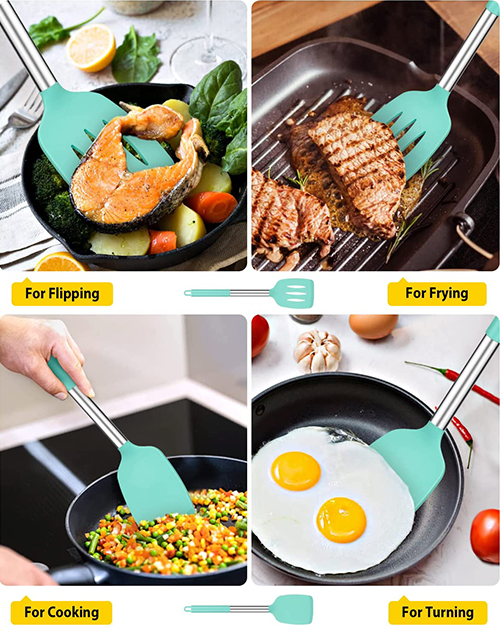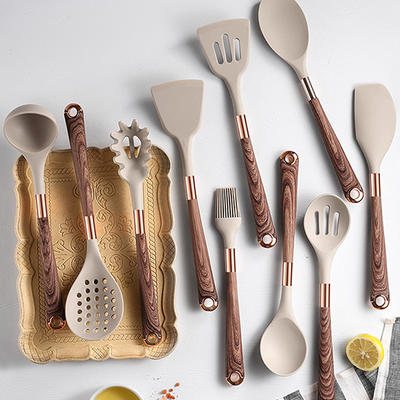 English
English-
 English
English -
 Español
Español -
 Português
Português -
 русский
русский -
 français
français -
 日本語
日本語 -
 Deutsch
Deutsch -
 Tiếng Việt
Tiếng Việt -
 Italiano
Italiano -
 Nederlands
Nederlands -
 ไทย
ไทย -
 Polski
Polski -
 한국어
한국어 -
 Svenska
Svenska -
 magyar
magyar -
 Malay
Malay -
 বাংলা
বাংলা -
 Dansk
Dansk -
 Suomi
Suomi -
 हिन्दी
हिन्दी -
 Pilipino
Pilipino -
 Türk
Türk -
 Gaeilge
Gaeilge -
 عربى
عربى -
 Indonesia
Indonesia -
 norsk
norsk -
 اردو
اردو -
 čeština
čeština -
 Ελληνικά
Ελληνικά -
 Українська
Українська -
 Javanese
Javanese -
 فارسی
فارسی -
 தமிழ்
தமிழ் -
 తెలుగు
తెలుగు -
 नेपाली
नेपाली -
 Burmese
Burmese -
 български
български -
 ລາວ
ລາວ -
 Қазақ
Қазақ -
 Euskal
Euskal -
 Azərbaycan
Azərbaycan -
 slovenský
slovenský -
 Македонски
Македонски -
 Lietuvos
Lietuvos -
 Eesti Keel
Eesti Keel -
 Română
Română -
 Slovenski
Slovenski -
 मराठी
मराठी -
 Српски
Српски
Advantages & Disadvantages of silicone utensils
2023-06-26
In recent years, silicone utensils has become more and more popular. They are made of flexible non-stick material that is easy to clean and resistant to high temperatures. But the question is: is silicone tableware easy to use? In this article, we'll explore the pros and cons of using silicone cutlery and whether it's worth the investment.

Advantages of silicone utensils
Durability: Silicone utensils are extremely durable and will last for years without showing signs of wear. This makes them a great investment for those who cook a lot and need appliances that can withstand heavy use.
Non-Stick Surface: The non-stick surface of silicone utensils makes them ideal for cooking foods that tend to stick to other materials such as metal or plastic. This feature also makes cleaning easier since food particles won't stick to the surface.
Heat Resistance: Silicone cutlery can withstand high temperatures without melting or warping. This means they can be used for high heat cooking without fear of damaging utensils.
Safe: Silicone is a non-toxic food-grade material. Unlike some plastic utensils, silicone does not leach harmful chemicals into food when heated. This makes it a safer option for those concerned about the health effects of plastic.
Versatility: Silicone utensils are available in a variety of shapes and sizes for a variety of cooking tasks. They can be used for stirring, flipping, scraping, and even baking.
Disadvantages of silicone tableware
Flexibility: While the flexibility of silicone utensils can be an advantage, it can also be a disadvantage. Some users find that the cutlery bends too easily, making it difficult to apply enough pressure when stirring or turning food.
Weight: Silicone utensils tend to be light, which can make them feel flimsy compared to heavier materials like metal. This can be a disadvantage for those who prefer the weight of traditional appliances.
Staining: While silicone is generally easy to clean, some users have reported that certain foods, such as ketchup, can stain the surface of the utensil.
Limited Use: While silicone utensils are versatile, they may not be suitable for all types of cooking. For example, they might not be good for grilling because they don't conduct heat like metal utensils. Unless you use silicone tableware specially suitable for grilling, such as: Silicone Oven Liner.

In general, silicone utensils has many advantages and is a good investment for those who cook frequently. They are durable, non-stick, heat resistant, safe and versatile. However, they also have some disadvantages such as flexibility, light weight, staining and limited use. It is up to the individual to decide whether these disadvantages outweigh the benefits. In general, if you're looking for a set of cutlery that's easy to clean, safe to use, and last for years, silicone cutlery is definitely worth considering.





